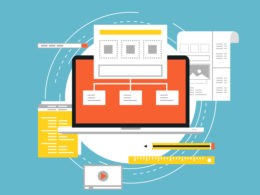When it comes to employee productivity, management styles can have a big impact. An effective management style educates and empowers employees — but an ineffective management style can actually push employees out the door, increasing churn, and decreasing morale. Discover the most common leadership styles that may have a positive influence on workers.
The most common leadership styles to increase productivity
Learn more about some of the most common types of leadership styles known to promote productivity.
Democratic leadership
Much like a democratic government, this leadership style provides employees with the chance to weigh in on major decisions. While the democratic process can be time-consuming, this leadership style is effective at creating a sense of connection and engagement among staff. When employees feel connected and valued, they’ll naturally want to do their best. As a result, productivity can increase under this leadership style.
Employee-led leadership
In this style of leadership, management takes a hands-off approach and leaves it up to staff to make the day-to-day decisions about what happens when. This might seem like no leadership at first, but there’s a subtle difference to note. In this style, managers act as a resource and sounding board for employees. The door is always open. However, the managers trust their team to make the key decisions about workflow and operations. This management style works best for specialized, highly trained teams.
Transformative leadership
Transformative leaders have a vision of the company’s future. That’s why they’re also known as visionary leaders. This leadership style is best suited for charismatic leaders who want to be involved in the day-to-day of running the business.
These managers use their charisma and knowledge to teach employees about their vision for the company. Bringing employees into the visionary dream helps motivate them to work hard to make it a reality.
Coaching leadership
As the name suggests, coaching leaders take a hands-on approach to managing employees. They may help workers with goal setting and skills development, taking a whole-person interest rather than seeing someone as his or her role. These managers motivate by setting clear expectations, seeing employees’ strengths and weaknesses, and providing steady support. While the payoff for worker productivity can be ample, this leadership style is time-intensive. It may be best suited for small workforces.
Pace-setter leadership
In industries where speed matters most, the pace-setter leadership style can be highly effective. As its name suggests, this style is driven by the leader, who sets the pace and standards for the team. Pace-setting leaders have a clear vision and high standards. They tell the team what to do and motivate them to get it done quickly. This can work in innovative industries like tech, but it is less effective in people-focused industries such as hospitality.
Bureaucratic leadership
While employees tend to be more motivated when they have a voice in decision-making, there are times when this isn’t an option. In highly regulated industries such as finance or healthcare, decisions need to come from the top down for compliance issues. In settings like this, bureaucratic leadership can be an effective way to get things done. A bureaucratic leader focuses on what needs to be done, by whom, and how to get it done. They may use checklists, procedures, and routines to keep things consistent. From the productivity point of view, employees always know what’s expected of them and how to do it. They are able to work quickly, without stress or confusion over roles and responsibilities.
Any of these leadership styles can be used effectively to help increase worker productivity. It’s all about understanding your tendencies as a leader, knowing your team’s strengths and weaknesses, and finding the best fit for your industry.
⸻ Author Bio ⸻ ⸻
Mihir Korke is Head of Acquisition at Clover, a leader in small business credit card processing and POS systems. Clover specializes in restaurant, retail, and personal and professional service payment solutions. With desktop and mobile POS systems, contactless payments, solutions for curbside pickup and online ordering, loyalty and rewards, Clover has multiple solutions to meet your business’s needs.












